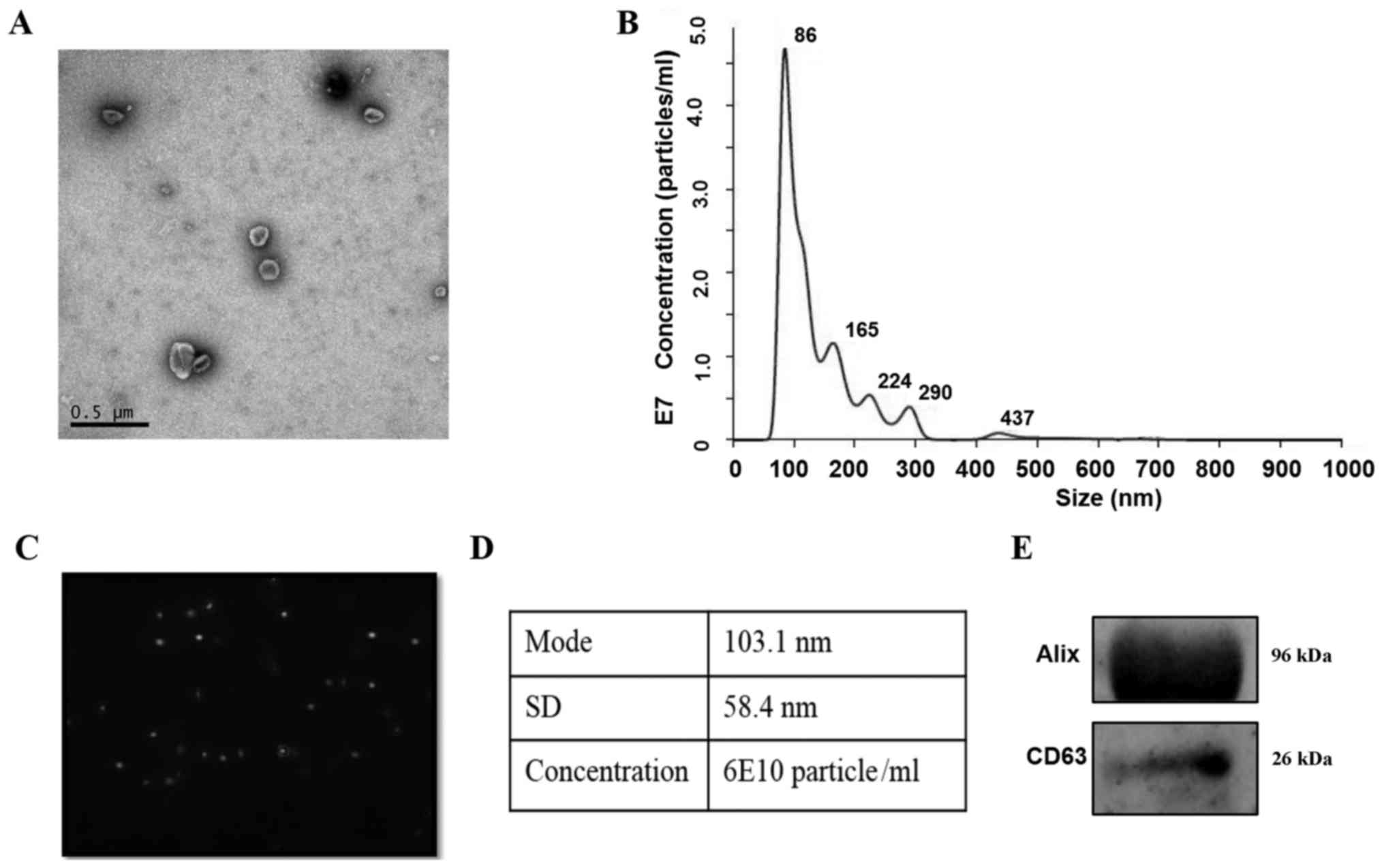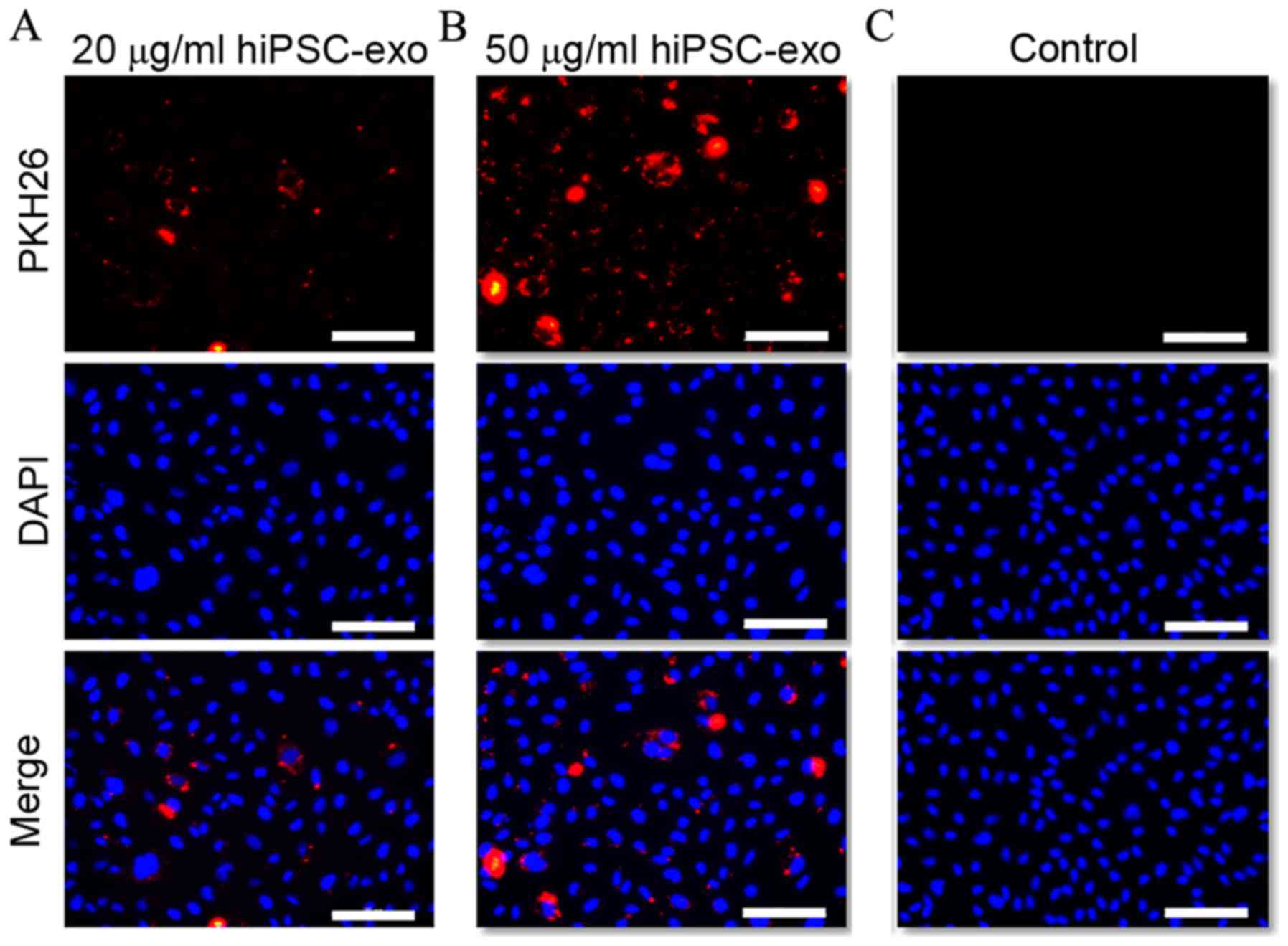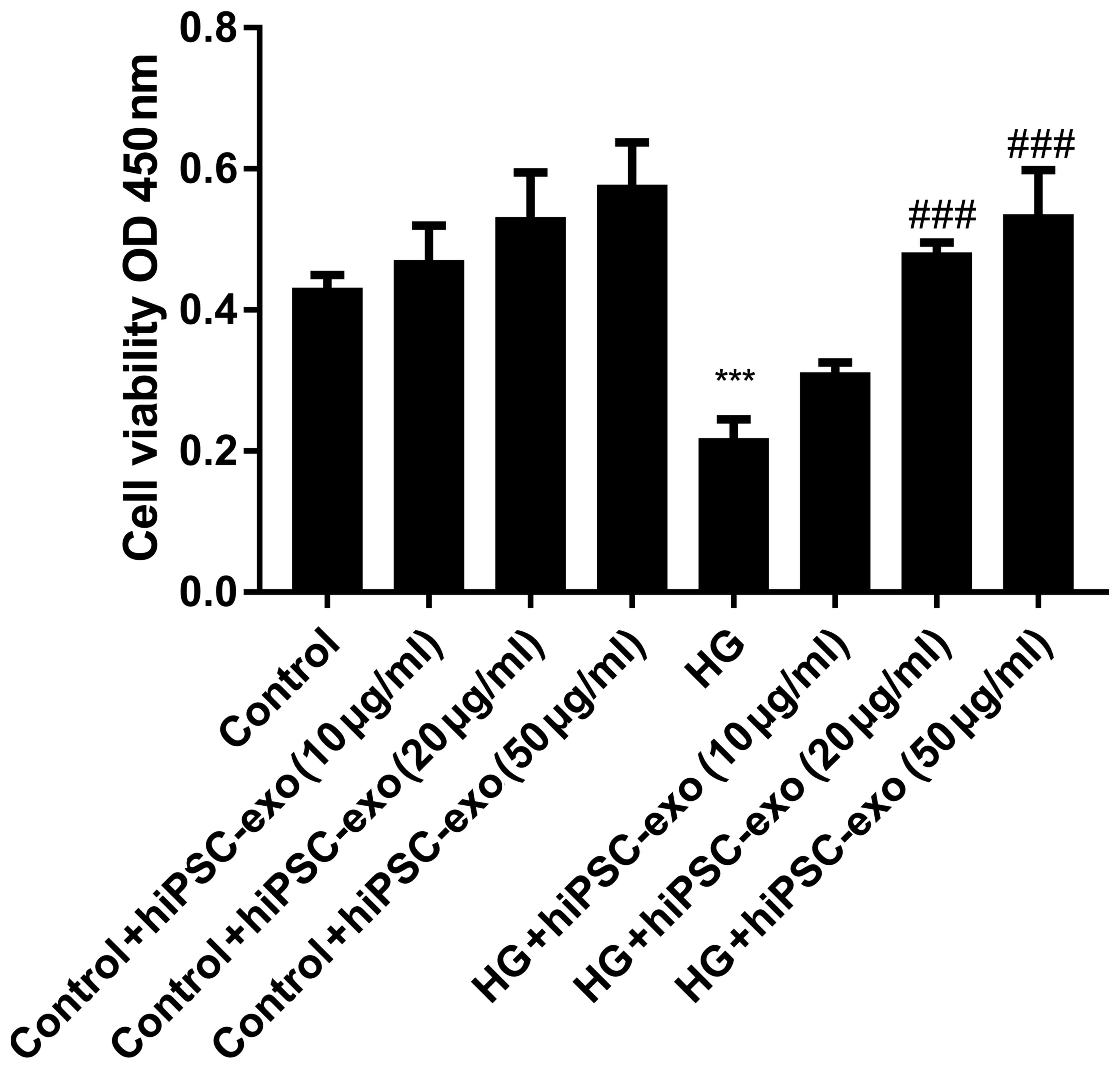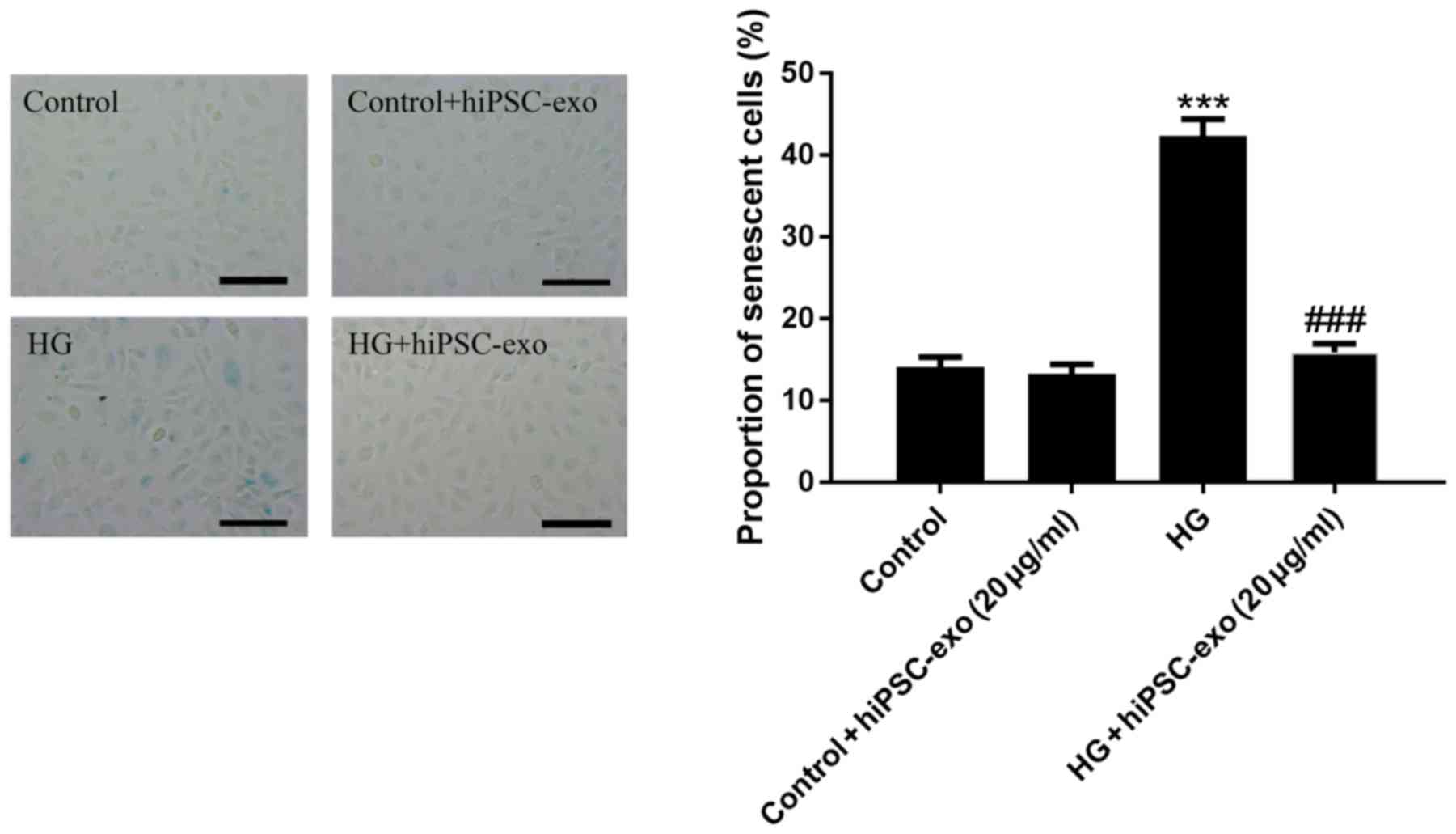|
1
|
Boyle PJ: Diabetes mellitus and
macrovascular disease: Mechanisms and mediators. Am J Med. 120 9
Suppl 2:S12–S17. 2007. View Article : Google Scholar : PubMed/NCBI
|
|
2
|
Sun KX, Liu ZK, Cao YY, Juan J, Xiang X,
Yang C, Huang SP, Liu XF, Li N, Tang X, et al: Relationship between
brachial-ankle pulse wave velocity and glycemic control of type 2
diabetes mellitus patients in Beijing community population. Beijing
Da Xue Xue Bao Yi Xue Ban. 47:431–436. 2015.(In Chinese).
PubMed/NCBI
|
|
3
|
Hermans MP: Diabetes and the endothelium.
Acta Clin Belg. 62:97–101. 2007. View Article : Google Scholar : PubMed/NCBI
|
|
4
|
Bürrig KF: The endothelium of advanced
arteriosclerotic plaques in humans. Arterioscler Thromb.
11:1678–1689. 1991. View Article : Google Scholar : PubMed/NCBI
|
|
5
|
Minamino T, Miyauchi H, Yoshida T, Ishida
Y, Yoshida H and Komuro I: Endothelial cell senescence in human
atherosclerosis: Role of telomere in endothelial dysfunction.
Circulation. 105:1541–1544. 2002. View Article : Google Scholar : PubMed/NCBI
|
|
6
|
Funakoshi S, Miki K, Takaki T, Okubo C,
Hatani T, Chonabayashi K, Nishikawa M, Takei I, Oishi A, Narita M,
et al: Enhanced engraftment, proliferation, and therapeutic
potential in heart using optimized human iPSC-derived
cardiomyocytes. Sci Rep. 6:191112016. View Article : Google Scholar : PubMed/NCBI
|
|
7
|
Neel S and Singla DK: Induced pluripotent
stem (iPS) cells inhibit apoptosis and fibrosis in
streptozotocin-induced diabetic rats. Mol Pharm. 8:2350–2357. 2011.
View Article : Google Scholar : PubMed/NCBI
|
|
8
|
Yan B and Singla DK: Transplanted induced
pluripotent stem cells mitigate oxidative stress and improve
cardiac function through the Akt cell survival pathway in diabetic
cardiomyopathy. Mol Pharm. 10:3425–3432. 2013. View Article : Google Scholar : PubMed/NCBI
|
|
9
|
Blin G, Nury D, Stefanovic S, Neri T,
Guillevic O, Brinon B, Bellamy V, Rücker-Martin C, Barbry P, Bel A,
et al: A purified population of multipotent cardiovascular
progenitors derived from primate pluripotent stem cells engrafts in
postmyocardial infarcted nonhuman primates. J Clin Invest.
120:1125–1139. 2010. View
Article : Google Scholar : PubMed/NCBI
|
|
10
|
Caspi O, Huber I, Kehat I, Habib M, Arbel
G, Gepstein A, Yankelson L, Aronson D, Beyar R and Gepstein L:
Transplantation of human embryonic stem cell-derived cardiomyocytes
improves myocardial performance in infarcted rat hearts. J Am Coll
Cardiol. 50:1884–1893. 2007. View Article : Google Scholar : PubMed/NCBI
|
|
11
|
Khan M, Nickoloff E, Abramova T, Johnson
J, Verma SK, Krishnamurthy P, Mackie AR, Vaughan E, Garikipati VN,
Benedict C, et al: Embryonic stem cell-derived exosomes promote
endogenous repair mechanisms and enhance cardiac function following
myocardial infarction. Circ Res. 117:52–64. 2015. View Article : Google Scholar : PubMed/NCBI
|
|
12
|
Johnstone RM, Adam M, Hammond JR, Orr L
and Turbide C: Vesicle formation during reticulocyte maturation.
Association of plasma membrane activities with released vesicles
(exosomes). J Biol Chem. 262:9412–9420. 1987.PubMed/NCBI
|
|
13
|
Raposo G, Nijman HW, Stoorvogel W,
Liejendekker R, Harding CV, Melief CJ and Geuze HJ: B lymphocytes
secrete antigen-presenting vesicles. J Exp Med. 183:1161–1172.
1996. View Article : Google Scholar : PubMed/NCBI
|
|
14
|
Valadi H, Ekström K, Bossios A, Sjöstrand
M, Lee JJ and Lötvall JO: Exosome-mediated transfer of mRNAs and
microRNAs is a novel mechanism of genetic exchange between cells.
Nat Cell Biol. 9:654–659. 2007. View
Article : Google Scholar : PubMed/NCBI
|
|
15
|
Pascucci L, Alessandri G, Dall'Aglio C,
Mercati F, Coliolo P, Bazzucchi C, Dante S, Petrini S, Curina G and
Ceccarelli P: Membrane vesicles mediate pro-angiogenic activity of
equine adipose-derived mesenchymal stromal cells. Vet J.
202:361–366. 2014. View Article : Google Scholar : PubMed/NCBI
|
|
16
|
Jeong D, Jo W, Yoon J, Kim J, Gianchandani
S, Gho YS and Park J: Nanovesicles engineered from ES cells for
enhanced cell proliferation. Biomaterials. 35:9302–9310. 2014.
View Article : Google Scholar : PubMed/NCBI
|
|
17
|
Sun N, Panetta NJ, Gupta DM, Wilson KD,
Lee A, Jia F, Hu S, Cherry AM, Robbins RC, Longaker MT and Wu JC:
Feeder-free derivation of induced pluripotent stem cells from adult
human adipose stem cells. Proc Natl Acad Sci USA. 106:15720–15725.
2009. View Article : Google Scholar : PubMed/NCBI
|
|
18
|
Jiang L, Yin M, Wei X, Liu J, Wang X, Niu
C, Kang X, Xu J, Zhou Z, Sun S, et al: Bach1 represses
Wnt/β-catenin signaling and angiogenesis. Circ Res. 117:364–375.
2015. View Article : Google Scholar : PubMed/NCBI
|
|
19
|
Mallegol J, Van Niel G, Lebreton C,
Lepelletier Y, Candalh C, Dugave C, Heath JK, Raposo G,
Cerf-Bensussan N and Heyman M: T84-intestinal epithelial exosomes
bear MHC class II/peptide complexes potentiating antigen
presentation by dendritic cells. Gastroenterology. 132:1866–1876.
2007. View Article : Google Scholar : PubMed/NCBI
|
|
20
|
Tang N, Sun B, Gupta A, Rempel H and
Pulliam L: Monocyte exosomes induce adhesion molecules and
cytokines via activation of NF-κB in endothelial cells. FASEB J.
30:3097–3106. 2016. View Article : Google Scholar : PubMed/NCBI
|
|
21
|
Barrès C, Blanc L, Bette-Bobillo P, André
S, Mamoun R, Gabius HJ and Vidal M: Galectin-5 is bound onto the
surface of rat reticulocyte exosomes and modulates vesicle uptake
by macrophages. Blood. 115:696–705. 2010. View Article : Google Scholar : PubMed/NCBI
|
|
22
|
Hoen Nolte-'t EN, Buschow SI, Anderton SM,
Stoorvogel W and Wauben MH: Activated T cells recruit exosomes
secreted by dendritic cells via LFA-1. Blood. 113:1977–1981. 2009.
View Article : Google Scholar : PubMed/NCBI
|
|
23
|
Yang G, Shi W, Hu X, Zhang J, Gong Z, Guo
X, Ren Z and Zeng F: Therapeutic effects of induced pluripotent
stem cells in chimeric mice with β-thalassemia. Haematologica.
99:1304–1311. 2014. View Article : Google Scholar : PubMed/NCBI
|
|
24
|
Wendel JS, Ye L, Tao R, Zhang J, Zhang J,
Kamp TJ and Tranquillo RT: Functional effects of a
tissue-engineered cardiac patch from human induced pluripotent stem
cell-derived cardiomyocytes in a rat infarct model. Stem Cells
Transl Med. 4:1324–1332. 2015. View Article : Google Scholar : PubMed/NCBI
|
|
25
|
Bang C, Batkai S, Dangwal S, Gupta SK,
Foinquinos A, Holzmann A, Just A, Remke J, Zimmer K, Zeug A, et al:
Cardiac fibroblast-derived microRNA passenger strand-enriched
exosomes mediate cardiomyocyte hypertrophy. J Clin Invest.
124:2136–2146. 2014. View
Article : Google Scholar : PubMed/NCBI
|
|
26
|
Xin H, Li Y, Cui Y, Yang JJ, Zhang ZG and
Chopp M: Systemic administration of exosomes released from
mesenchymal stromal cells promote functional recovery and
neurovascular plasticity after stroke in rats. J Cereb Blood Flow
Metab. 33:1711–1715. 2013. View Article : Google Scholar : PubMed/NCBI
|
|
27
|
Li J, Liu K, Liu Y, Xu Y, Zhang F, Yang H,
Liu J, Pan T, Chen J, Wu M, et al: Exosomes mediate the
cell-to-cell transmission of IFN-α-induced antiviral activity. Nat
Immunol. 14:793–803. 2013. View
Article : Google Scholar : PubMed/NCBI
|
|
28
|
Zhang L, Zhang S, Yao J, Lowery FJ, Zhang
Q, Huang WC, Li P, Li M, Wang X, Zhang C, et al:
Microenvironment-induced PTEN loss by exosomal microRNA primes
brain metastasis outgrowth. Nature. 527:100–104. 2015. View Article : Google Scholar : PubMed/NCBI
|
|
29
|
Hoshino A, Costa-Silva B, Shen TL,
Rodrigues G, Hashimoto A, Mark Tesic M, Molina H, Kohsaka S, Di
Giannatale A, Ceder S, et al: Tumour exosome integrins determine
organotropic metastasis. Nature. 527:329–335. 2015. View Article : Google Scholar : PubMed/NCBI
|
|
30
|
Kiritoshi S, Nishikawa T, Sonoda K,
Kukidome D, Senokuchi T, Matsuo T, Matsumura T, Tokunaga H,
Brownlee M and Araki E: Reactive oxygen species from mitochondria
induce cyclooxygenase-2 gene expression in human mesangial cells:
Potential role in diabetic nephropathy. Diabetes. 52:2570–2577.
2003. View Article : Google Scholar : PubMed/NCBI
|
|
31
|
Yu T, Robotham JL and Yoon Y: Increased
production of reactive oxygen species in hyperglycemic conditions
requires dynamic change of mitochondrial morphology. Proc Natl Acad
Sci USA. 103:2653–2658. 2006. View Article : Google Scholar : PubMed/NCBI
|
|
32
|
Conigliaro A, Costa V, Lo Dico A, Saieva
L, Buccheri S, Dieli F, Manno M, Raccosta S, Mancone C, Tripodi M,
et al: CD90+ liver cancer cells modulate endothelial cell phenotype
through the release of exosomes containing H19 lncRNA. Mol Cancer.
14:1552015. View Article : Google Scholar : PubMed/NCBI
|
|
33
|
Zhang Y, Chopp M, Meng Y, Katakowski M,
Xin H, Mahmood A and Xiong Y: Effect of exosomes derived from
multipluripotent mesenchymal stromal cells on functional recovery
and neurovascular plasticity in rats after traumatic brain injury.
J Neurosurg. 122:856–867. 2015. View Article : Google Scholar : PubMed/NCBI
|















